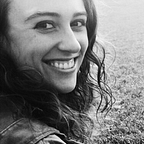Week 4: October 4
Prototype creation & ideation
Team: Laura Rodriguez, Katherine Herzog, Josh LeFevre, & Newell Khale
This week we worked on developing a more refined prototype of our kit and met again with Viviana Ferrer-Medina to discuss our concept.
Prototype Construction
To develop the more refined kit, we began collecting materials and fashioning them into the pieces we had planned. To begin, we decided on the measurements we would use and purchased small wooden dowels to use as the stiff connecting pieces. We also purchased silicone to use as flexible connectors. These we cut down to two lengths to provide some variety in how the other pieces could be joined.
We then purchased or gathered wood to build the first set of shapes. We cut the wood to proportion and drilled holes in them to fit the connectors. We decided to leave the wood uncolored in order to leave the feel unaltered and to keep the distinctive look of the wood relative to the other materials we planned to include.
In addition to the wooden objects, we also gathered materials to create a set of objects using felt. We sewed the felt together into the desired shapes and filled them with cotton balls to help create the forms. Small holes were created in the felt to fit the connectors.
For the plastic objects we made use of the 3D printers in the materials lab. We had solid objects created with the holes necessary for the connectors. These objects needed some additional work after creation. In order for the connectors to fit properly the supports inside the holes had to be cleared out and the holes had to be filed to be the correct size.
We explored the possibility of creating materials from concrete, but found that creating objects of the size we wanted with holes would not be durable. As a result, we began investigating the possibility of creating these objects in a different way that would still give the feeling of stone or concrete, but would address the durability issue. We will work on solving this over the next week.
We also created plans for a container to hold the materials in the kit. This will be created using plywood and cut to shape with laser cutters.
Discussion with Vivianna
In addition to creating materials for the next iteration of our kit, we also met again with Viviana Ferrer-Medina. We discussed what we learned from our initial testing, shared our plan for next steps and discuss the script we had developed for when we explain the purpose and instructions to participants.
Based on her feedback we made wording changes to our scripts to clarify the purpose of the project and to make the instructions for participants easier to follow. She suggested we use the word “visualization” as oppose to “externalization” because she felt that “visualization” was more approachable and easier for others to understand. She thought including a word bank was a good idea because it would provide the participant with a starting point. She suggested we adjust the words included in the word bank by only using words that would be relatable to everyone. So we removed words like Depression because it did not fit well with the other words that were all emotions. She also suggested that we add more words that would relate to the CMU community because they were the individuals who we would be testing with. So we added Loneliness and Stress since these fit with the other words and are common feelings in our community.
